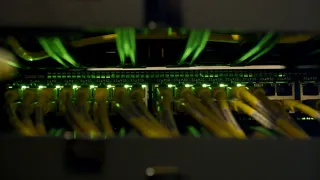The smart 6G networks of the future will take their models from biological organisms, which are known for their efficiency. The networks will be based on the subsidiarity principle and will be weakly coupled. In the worst case, a network can operate chaotically unless the right principles of system design are followed.
The development of telecommunications networks has been affected by Moore's Law according to which the number of transistors that fit on a silicon-based circuit doubles every two years. The law, in its different forms, has been in force for about 60 years, but now we have reached the limits imposed by nature. I became interested in the end of Moore's Law in the early 2010s when the electronics experts were already quite familiar with it. People have often said to me that Moore's Law cannot stop and some claimed that it would continue at least until 2100.
In 2016 the idea that Moore's Law would end was evident, as the International Technology Roadmap for Semiconductors (ITRS) community predicted that Moore's Law would stop in five years, and no new ITRS report has been made. An article on the subject was published in Nature in the same year. I published an easy-to-read tutorial about the end of Moore's Law in 2017.
The focus of attention has moved to the management of bigger wholes - i.e., to systems thinking.
The end of Moore's Law affects us all because energy efficiency will no longer improve the way it used to do, and a significant slowdown of development will be expected, first in the physical layer, and gradually also in slower-functioning layers once complexity can no longer be increased without limit. New networks follow the so-called small world principle with various short cuts, just as our brains do. The networks will be weakly coupled, which means that operations at the lower levels are almost autonomous, with slow and weak centralised control.
Weakly coupled structure, or architecture, has a long and fumbling history from the days of antiquity, and it has several names. In social sciences it is called the subsidiarity principle, and in engineering, it is weak or loose coupling. Biological systems are based on this agile structure because otherwise they would not have had enough time to evolve. In other words, other structures have been eliminated by evolution. In telecommunications, loosely coupled architecture is a largely unknown concept, but it is used in other areas of engineering at least in control theory, structured software design, and in Internet services. A loosely coupled structure was mentioned in a fresh roadmap of the IEEE's Systems Optimization working group.
A well-planned structure enables network reliability and agility
In the network layer the feedback loop is still a fairly new thing. The loop includes network sensing, decisions, and an actuator, which regulates parts of the network.
I have been told that feedback belongs to the physical and not to the network layer. The new network structures of the European Telecommunications Standards Institute (ETSI) indicate that feedback is coming to smart telecommunications networks. Traditionally feedback is used in areas such as data flow and congestion management, especially in the transport layer. In the link and physical layer, feedback is fairly common. Examples include automatic repeat requests, transmitter power control, adaptive channel equalizers, and synchronisation. In the network layer, feedback is not used as much.
In a weakly coupled small-world network all parts are known well in principle, but not so much as the whole. A network has many positive features, for example, stability, scalability, efficiency, reliability, agility, and resilience. The basic problem is that when a smart network requires the use of feedback, it can become unstable unless the structure is designed correctly. Instability can be caused by a large loop delay or the strong coupling of loops with each other. A classic example of the latter is the transmitter power control where the so-called cocktail party effect may happen, in which everybody is shouting at each other and nobody hears anything. Therefore, loops must not be built out of control because the result might be chaotic. This is a system design problem. The fundamental solutions are hierarchy and the minimisation of coupling between loops. Layers that are high in the hierarchy work slowly and weakly owing to the delays, while lower layers work fast and tight. Consequently, the network functions like a biological organism.
In the EU DEDICAT 6G project we are studying the sixth generation of wireless networks that will be introduced in the early 2030s. They are very likely weakly coupled, as was mentioned above. Central thoughts of the project are extended dynamic coverage and distributed intelligence in human-centric applications. The goal is to achieve greater resource efficiency, as well as less delay, response time, and energy consumption. The operational costs and capital expenditures should be brought down, and data security, privacy, and reliability need to be improved.






